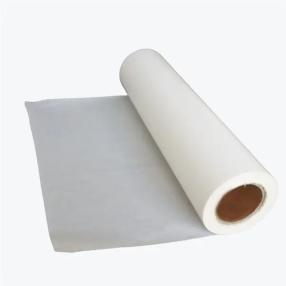The invisible adhesive protector: Unveiling the secrets of water-repellent hot melt adhesive film
Release time: 2025-09-22
Table of Contents
In daily life, we often marvel at the ingenious designs of certain products: a lightweight, breathable outdoor jacket that effectively blocks light rain; a stylish Bluetooth earbud case with a surface that repels water like a duck’s back; sneakers where the tongue and upper seamlessly blend without a trace of stitching.
Behind these marvels lies an unsung hero—water-repellent hot-melt adhesive film. What exactly is it, and what remarkable applications does it have? Today, we’ll take a closer look.
1、Introduction
Simply put, it is a solid adhesive film with water-repellent properties.
►Form: Typically a roll of white or translucent film with a slightly slippery texture.
►Working Principle: Under high temperature and pressure, the adhesive film melts into a viscous flow state, permeating into the pores of the substrate material. Upon cooling and curing, it forms a robust adhesive layer. Simultaneously, its inherent chemical properties or specialized composite coating impart exceptional water-repellent performance to the bonded area.
2、Advantages
►Seamless bonding
Replacing traditional stitching, it achieves seamless bonding between fabric layers, offering an aesthetically pleasing finish while eliminating the risk of leakage through needle holes.
►Windproof and waterproof
Effectively blocks the penetration of liquids (rainwater, beverages, etc.) while providing wind resistance.
►Breathable and moisture-wicking
The adhesive film bonds without blocking the material’s micro-pores, ensuring breathable comfort for the garment.
►Soft and form-fitting
After bonding, the fabric retains its original feel and softness without any stiffness.
3、Application
►Outdoor Sports and Functional Clothing
Waterproof Sealed Seams: Narrow water-repellent adhesive films are applied to the seams of jackets, raincoats, and skiwear. Using a heat press machine, these films are fused to form sealed seams, completely preventing rainwater from seeping through stitching. This is a key process in manufacturing high-end waterproof apparel.
Fabric Laminating: An outer waterproof fabric layer, a breathable membrane interlayer (such as GORE-TEX), and an inner lining fabric are bonded together using a heat-activated adhesive film. This creates a “sandwich” composite material with waterproof and moisture-permeable functionality.
►Footwear & Accessories Industry
Footwear: Used for bonding shoe tongues, uppers, waterproof boot covers, and similar components to eliminate friction from stitching and prevent leakage points, enhancing overall integrity and waterproofing.
Luggage & Bags: Applied to waterproof roll-top closures, waterproof compartments, and logo bonding on backpacks and handbags to boost functionality and elevate premium quality.
►Home Furnishings & Automotive Interiors
Home Furnishings: Laminating and edge sealing for waterproof bedspreads, sofa covers, tablecloths, and similar products.
Automotive: Laminating interior materials such as headliners, door panels, and floor mats. The adhesive film must not only be splash-resistant but also withstand extreme temperatures and resist aging.
Choose Anhui Tomis, you will get:
Professional technical support: to provide you with the most suitable choice of adhesive film and embossing program.
High-quality products: strictly control the production process to ensure that each meter of film is of excellent quality.
Perfect after-sales service: to solve your worries, so that you can use at ease.
Contact us now for more information about adhesive film!


